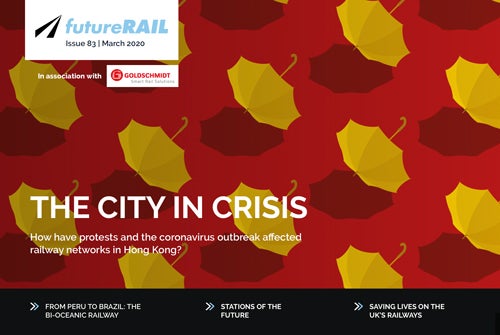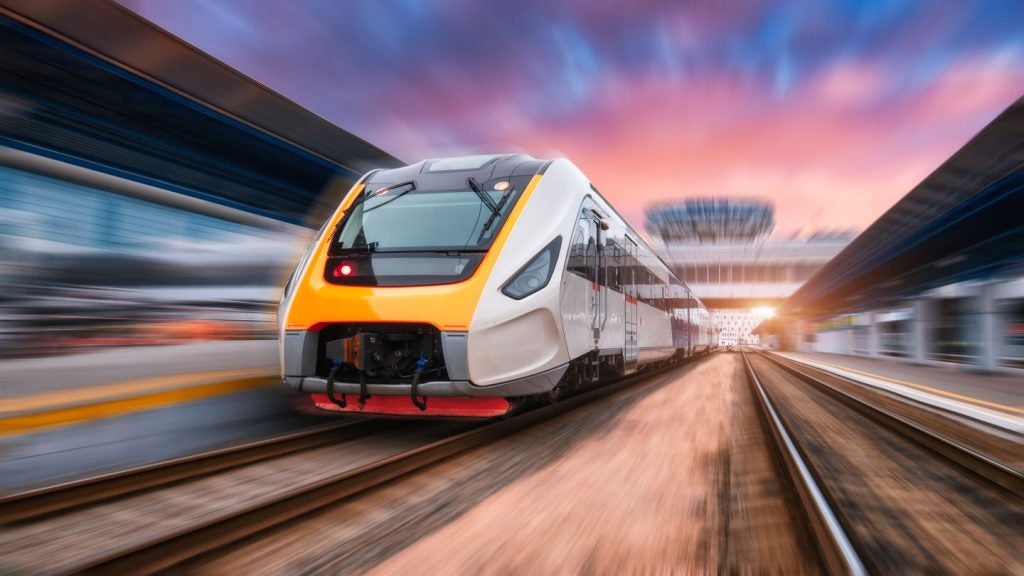
Future Rail is back for another issue packed with technology news and industry analysis. In this issue, we explore the impact of protests and the ongoing coronavirus outbreak on Hong Kong’s subways, discover current obstacles to the Bi-Oceanic Railway corridor project set to link Peru and Brazil, and speak to an organisation of volunteers attempting to protect vulnerable people on the UK’s railways.
Whether you are on a desktop, tablet or smartphone, you can read the magazine for free online.
In this issue
Hong Kong protests: how has the MTR been affected?
Over the past few months, Hong Kong rioters have repeatedly targeted the city’s subway operator, the MTR. With the COVID-19 outbreak now predicted to cause a major drop in ridership, Adele Berti asks: what does the future hold for Hong Kong’s rail network?
Introducing ‘Tomorrow’s Living Station’
How well do you really know your competitors?
Access the most comprehensive Company Profiles on the market, powered by GlobalData. Save hours of research. Gain competitive edge.

Thank you!
Your download email will arrive shortly
Not ready to buy yet? Download a free sample
We are confident about the unique quality of our Company Profiles. However, we want you to make the most beneficial decision for your business, so we offer a free sample that you can download by submitting the below form
By GlobalDataNetwork Rail and Arup have collaborated on a report called ‘Tomorrow’s Living Station’, which envisages the railway station of the future as the beating heart of local business and community wellness. Ross Davies takes a look at some of the paper’s key takeaways.
Inside DHL’s new rail freight service between China and Germany
DHL recently launched the fastest rail freight service running between Xi’an in China to Hamburg and Neuss in Germany. The line is expected to cut transit time from 17 to between ten and 12 days, and was built in an effort to strengthen trade between the EU and China, which is already estimated to be worth €1bn a day. Alex Love takes a deeper look into this project.
Rail pastors: the volunteers saving lives on the UK rail network
Preventing rising rates of suicide on the UK’s sprawling rail network is a huge challenge for police, charities and train operators. Since 2014, volunteer ‘rail pastors’ have been patrolling sections of the railway looking for vulnerable people who may need care. Phil Norton, a rail pastor from Essex, describes the role and its challenges to Chris Lo.
Could an EU agreement boost female employment in rail?
In late 2019 the Community of European Railway & Infrastructure Companies and the European Transport Workers’ Federation started negotiations for an EU-level agreement to promote the employment of women in the rail industry. Frances Marcellin speaks to CER executive director Libor Lochman and senior policy adviser of social and public affairs Ester Caldana about why it will help to put the rail industry on the right track.
Will the Bi-Oceanic Railway ever see light at the end of the tunnel?
The Bi-Oceanic Railway Integration Corridor set to, which will link Peru and Brazil, has been on the cards for a while long, yet very little progress has so far been made so far. As political and economic uncertainty continues to affect Latin America, what are the chances of this project ever coming to fruition? Adele Berti takes a closer look.
Bombardier’s MITRAC: creating a legacy system for energy conservation
While Bombardier Transportation’s railway propulsion systems have been in use globally for more than a century, its latest MITRAC portfolio was redeveloped with the aim of helping railways to improve energy efficiency and reduce emissions. Varsha Saraogi investigates how this technology has evolved.
Remote sensing: could drones and satellites help provide better railway infrastructure monitoring?
Over the last two years, the EU-funded MOMIT project has sought to demonstrate the use of remote sensing technologies – such as drones and satellites – for railway infrastructure monitoring. As Ross Davies finds out, the ultimate benefit could be the safeguarding against the effects of natural hazards.
Next issue
After the European Rail Freight Association issued a series of demands for the European Commission to reform international rail freight, we find out what has held the sector back in this region and what can be done to boost business.
We also ask about the future financial prospects of US railroad operator Amtrak, examine the main questions still surrounding the UK’s High Speed Rail 2 (HS2) project, and ask how upcoming high-speed rail lines can ensure safety.
Also next time, we take a look at what can be done to make railways more resilient to stormy weather, ask about advanced technologies that can boost connectivity in line with rail’s move towards digitisation, and speak to Israeli tech experts Cylus about emerging threats on metro networks.
Would you like to be notified when a new issue of Future Rail is out? Sign up for email alerts here!
We will only use your email address to let you know when a new issue is available. Future Rail is published bimonthly.





